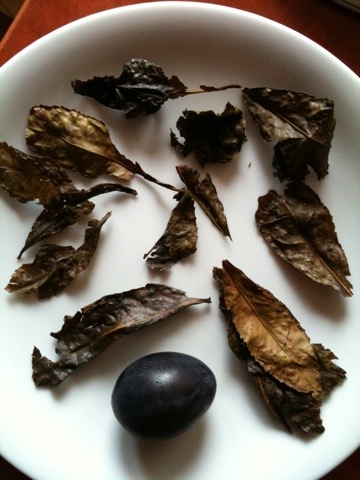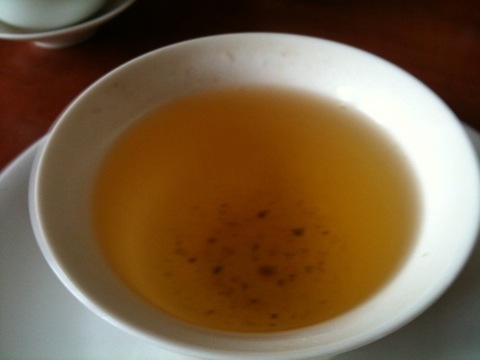Awabancha
Posted on 28 September 2011
A tea oddity today. I’ve received a bag of awabancha from Japan. It’s a rare, rustic tea mostly hailing from the prefecture of Tokushima. Bancha refers to the coarse summer grade of tea made up of larger leaves down the tea branch. Awa identifies the rather extraordinary production process where leaves are first boiled and then hermetically fermented. It’s as close as you’ll get to puer in Japan. (A good article on awabancha can be read here).
Reading through other descriptions of awabancha, I was a little concerned about the earthy ‘rotten’ aromas many authors alluded to. None of this here, luckily. The dry leaves in fact have almost no smell and it’s only when warmed in the preheated cup that they exude an unaggressive scent of fallen autumnal leaves.
This tea should be brewed with boiling water. There’s relatively little power in these leaves (remember they were already boiled for several minutes during processing), so I opted for a single prolonged brewing instead of gongfu. The colour is yellow, like young sheng puer. The taste is a little more pungent, but less than I expected. Again notes of earth, pepper, together with a deeper, sweeter, honeyed note. This tea is positively odd, and will not be to eveyone’s taste, but it’s distinctive and balanced. I have no idea how it compares to other awabanchas out there, but it’s actually more palatable and balanced than anticipated.
Disclosure
Source of tea: gift from a tea friend.



